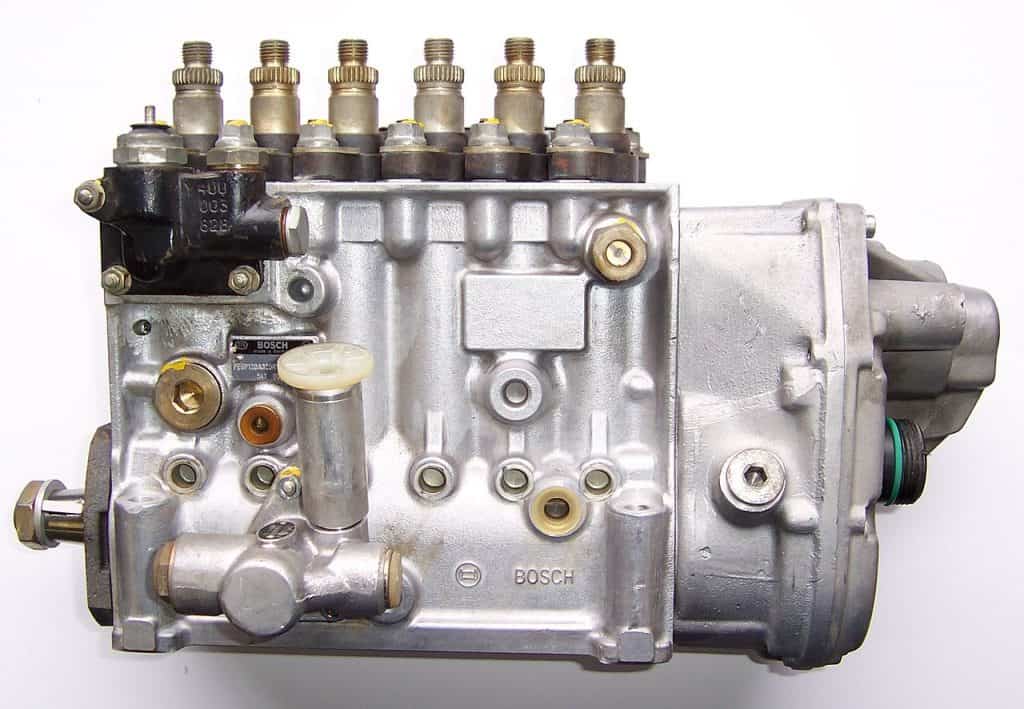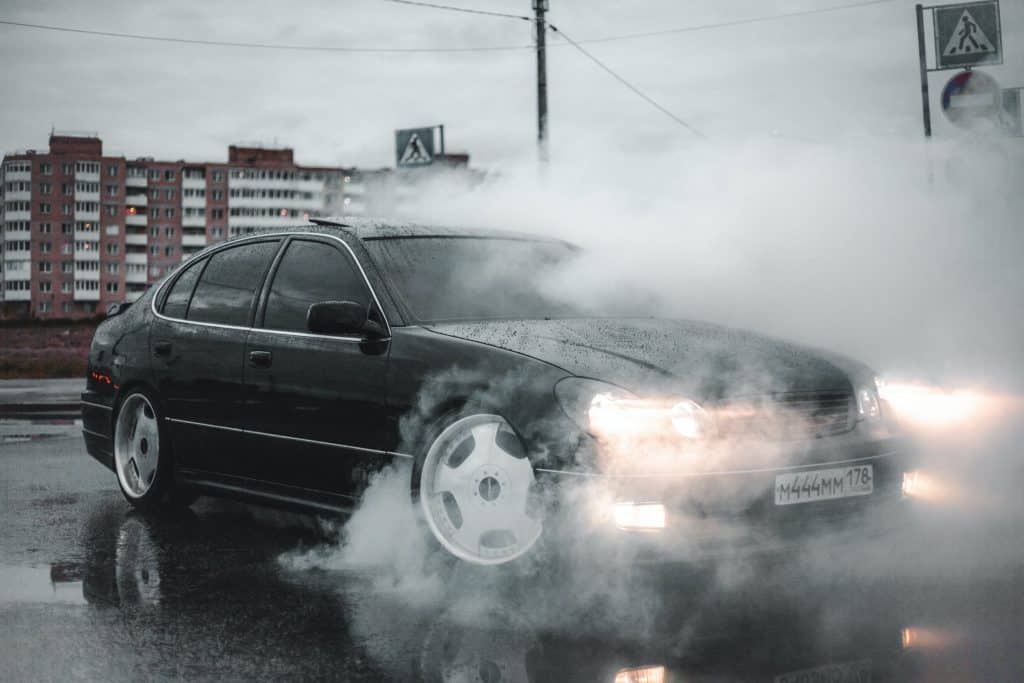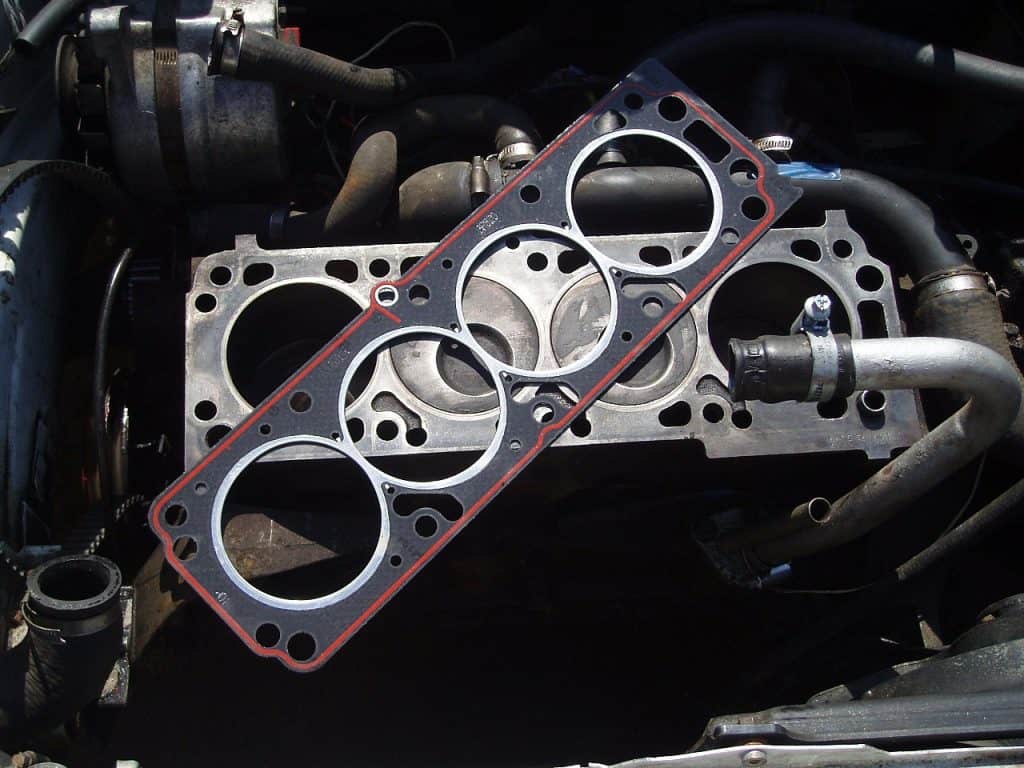You must pull over to the side of the road and investigate the source of any white smoke coming from beneath your hood. This article delves deep into a few typical causes.
Have you ever seen white smoke coming from your car’s hood while you were driving? It’s frightening and unsettling to have this disease, especially if you don’t know what’s causing it. It shouldn’t happen normally, yet white smoke can be seen coming from the engine.
In this article, we consider potential remedies as we examine the sources of white smoke coming from the engine. We will also give you a rough idea of the cost of a repair.
Your combustion engine creates a combination of carbon dioxide and water vapor when it is operating as it should. This is largely undetectable as it is expelled through the exhaust system. The engine might start burning something else if there is an issue with the way it is operating.
White smoke is a sign of pollution of some kind. The engine is burning something else than air and gasoline.
An external coolant or oil leak is the most frequent cause of white smoke emanating from the engine. A hot engine that pushes coolant out of the system and into the engine compartment may also be the source of the external coolant leak.
The causes of the white smoke coming from your engine are listed in further detail below:
What Causes the Car to Emit White Smoke from Engine?
We’ll now look at some of the potential problems if the white smoke is coming from the exhaust or engine components as opposed to steam.
White smoke may be a sign of an issue with the engine, damage to the cylinder head or engine block, a failing head gasket, or coolant in the combustion chamber.
Most of the time, the tailpipe, or end of the exhaust, is where the white smoke that you see coming from the engine regions is coming from. The white smoke may also be flowing from the engine bay if you have a very major technical issue (like a large fracture or hole) with your engine block or exhaust manifold.
Again, the coolant system is where it all comes down to (a little coolant joke for you). Give it a little whiff if you see white smoke coming from the exhaust. But not too much; exhaust fumes aren’t exactly healthy for your lungs or you. An additional indication that coolant is the issue is if the odor is on the verge of being sweet or fruity.
If coolant can be detected in the smoke, this indicates that coolant is also igniting in the combustion chamber with the fuel and air. The coolant normally contains some water, which causes the smoke to become white. This suggests a leak within.
There are seven other typical causes for this. They consist of:
1. A Leaking Head Gasket
Not the cheapest or simplest repairs are head gaskets. Either you’ll need a lot of time and specialized tools, or you’ll need some extra money to pay the neighborhood mechanic.
A tiny, expertly crafted metal component called the head gasket creates a seal between the cylinder head and the engine block. the head gasket’s name.
However, it’s not always as straightforward as just changing the head gasket. The gasket will typically have blown or distorted due to another cause. First, it has to be addressed, otherwise, the issue will merely recur with the new gasket.
The surface between the block and the head must frequently be exceptionally flat and exact, along with specific instruments. This is the main reason why most individuals get their automobiles fixed by professionals. Although doing it yourself initially may be far less expensive, things are also much more likely to go wrong in the long run.
Overall, we advise having the automobile serviced by a qualified mechanic who can correctly identify the issue and then replace your head gasket. The most secure choice is this.
2. Engine Block or Mechanical Failure In the Cylinder Head
There are quite literally holes that might cause white smoke to come from engine blocks or cylinder heads. or fractures
In that coolant is entering the cylinder’s combustion region, the underlying issue is quite similar to the head gasket problem. It’s unfortunately more difficult to correct.
This problem is caused by a fractured chamber that is flowing coolant beyond the cylinders in one or more places. This enables the coolant to leak as it passes by and enters the combustion chamber. If it is a gasoline or petrol engine, it is then quickly burned by the air/fuel combination and spark, moving via the exhaust valve to the exhaust pipe, and eventually coming out of the tip.
Unfortunately, there isn’t much you can do about this. Even if you could weld it, it would still be extremely difficult because of the forces and energy exchanges occurring inside the engine block or cylinder head.
If this is the issue, the most practical solution would be an engine change. There’s no use in being any less direct than to say that’s a very pricey one.
Realistically, your best option is to decide if it would be better to junk the automobile or buy a brand-new engine for it.
If you have a really serious technical problem (such as a significant fracture or hole) with your engine block or exhaust manifold, white smoke may also be coming from the engine compartment.
3. Issues with the Fuel Ignition
Compared to diesel vehicles, this problem affects petrol/gasoline automobiles more frequently.
If you smell fuel mixed with the white smoke coming from the engine, there can be a problem with the fuel ignition system. A high-quality OBD (on-board diagnostics) device and a professional diagnosis are probably required in this case.
If you notice a gasoline scent when you switch on your automobile, don’t be deceived. This might be accompanied by some white vapor coming from the exhaust if it’s a cold morning.
The fuel mixture is adjusted to be richer when you initially start your automobile. This facilitates cold starts and speeds up engine temperature rise.
It’s not very frequent, however white smoke may be produced if you do suspect a fuel problem. Never be reluctant to have your automobile serviced. There is no harm done if they state the automobile is in perfect working order.
4. Exterior Coolant Leak
If the engine compartment is where the white smoke is coming from, your engine is either overheated or has an exterior coolant leak. White smoke will be produced when vapor from the coolant interacts with the heated portion.
Many various factors, such as damaged gaskets or fractured coolant hoses, can lead to coolant leaks.
An overheated engine that causes the coolant to leak out of the coolant system can also result in white smoke coming from the engine compartment. Let’s move on if the exhaust is where the smoke is coming from rather than the engine compartment.
5. Leaky Valves or Seals
The engine is made up of multiple seals and valves, all of which must function well for it to operate properly. Oil might start leaking if one of the piston valve seals or rings starts to fail.
Burnt oil is sometimes mistaken for white smoke, although having a deeper blue hue to it. When the leak is not as severe, it will first seem whiter before becoming blue.
6. Poor Timing of the Diesel Injector Pump
If the mixture is off, your diesel engine may also have issues. It will behave just like a malfunctioning fuel injector from a gas engine if the injector pump timing is off.
Too much fuel is present in the mixture as a result of the poor timing. You end up with white smoke streaming from the engine as it remains unburned.
7. Faulty Fuel Injector
To guarantee that there is the proper amount of fuel to combine with oxygen for combustion, the injector makes sure. To guarantee that nothing alters this composition, the majority of current motors are precisely tuned.
However, the combination can get too much fuel if the injector isn’t operating properly. The exhaust will emit white or grey smoke since this fuel won’t be able to burn properly.
Different Engine White Smoke Types
- The Tiny Vapor
- Smoke With A Sweet Smell
- The Normal White Smoke
Head gasket by Collard / CC BY-SA 3.0. The two most expensive and difficult to repair causes of white smoke emanating from the engine are a blown head gasket or a damaged cylinder. Your vehicle’s type will determine how much it would cost to correct these problems, which may be up to $2,000.
1. The Tiny Vapor
As part of the exhaust, your automobile normally produces some vapor. You could be more startled if you’re not used to seeing it or if you start your car on a chilly day.
The exhaust steam may appear more intense as the temperature drops, sometimes giving the impression that it is smoke. But if this smoke goes away fast, you generally don’t need to be concerned.
2. Smoke with a Sweet Smell
You can count on a coolant leak if the white smoke is dense and sweet-smelling. Because coolant is highly delicious, it should be kept out of reach of animals because they will be drawn to it and drink it.
However, when coolant and gasoline combine, they burn in the engine and send out white smoke. Additionally, it will emit a singular pleasant scent that is unmatched by any other vehicle fluid. This condition might be caused by, as we mentioned before, either a blown head gasket or a broken cylinder, both of which require expensive repairs.
3. Regular White Smoke
Condensation in the exhaust might be the reason for white smoke coming from the engine if you don’t smell anything unusual. Just like regular water vapor, condensation can build up in the exhaust, especially if you are just starting the vehicle in the morning.
Visualize dew accumulating on grass. The difference is that this is happening in your car’s exhaust. If this is the case, it will swiftly burn up. If the smoke continues, you should check your engine since it may be broken.
How Much Does the White Smoke from Engine Repair Cost?
Depending on what is creating the white smoke, different solutions have different costs. There are various possibilities, as we’ve shown. If the issue is something straightforward, such as a faulty gasket, a replacement should run you less than $150 including labor.
The cost of the additional repairs is generally high. For instance, the cost of a leaky valve or seal might range from $50 to $1,000. A damaged fuel pump or injector may cost up to $2,000 to replace. The most significant issues are a blown head gasket or a broken cylinder, both of which are expensive and challenging to fix. Depending on the type of vehicle you drive, the cost to fix these issues might reach $2,500.
However, you want the issue corrected every time you notice white smoke coming from the engine. If you don’t, the engine will sustain significant damage and need to be completely replaced.
What Does It Mean When Engine Smoke Comes In Multiple Colors?
The White smoke: White smoke may indicate that the engine is having issues, that the cylinder head or engine block is damaged, that the head gasket is leaking, or that coolant has entered the combustion chamber. If the smoke has a pleasant aroma, the coolant is almost certainly to blame. If the smoke has a fuel-like odor, the fuel system controls are malfunctioning.
The Gray or blue smoke: The presence of blue or gray smoke and a bitter, pungent odor indicates that the engine is burning oil. The most likely oil source might be clogged PCV valves, overfilled crankcases, leaking valve seals, worn piston rings, the incorrect type of oil, or infrequent oil changes. Thick gray smoke is created when a faulty transmission vacuum modulator permits transmission fluid to seep into the intake manifold.

The Black smoke: When your car emits black smoke, it’s burning too much-unprocessed fuel. Unburned fuel enters the exhaust system through the tailpipe when incomplete combustion occurs as a result of a leaky fuel injector, a broken engine sensor or ignition component, or a broken fuel pressure regulator. There will be a gasoline odor to this dark smoke.
A short circuit in an electrical system is another potential cause of black smoke. The lights will flicker and it will interfere with other electrical equipment.
The Conclusion
Your car’s hood smoking is an obvious indication that something is wrong. It can be a symptom of a straightforward problem or a problem with your car. After sitting overnight, it’s typical to observe a tiny white puff of smoke emerge from your tailpipe. Only water vapor exists.
As water interacts with the radiator or exhaust on a wet day, steam may also be visible pouring from the hood. However, you must stop right away and take a look if you are driving and suddenly smoke appears to be coming from the engine or exhaust.
It’s crucial to initially comprehend what the color or scent of the smoke suggests before you start to fear. You may decide whether to keep driving or seek the advice of a repair shop by determining the reason.


Nyangano Maurice specializes in vehicle troubleshooting and has more than 10 years of experience in the automobile industry. Over many years of experience as a car mechanic, he has acquired a broad range of skills, including engine repair, brake systems, electrical systems, and more. He frequently hosts community workshops and training programs to help motor vehicle owners understand their vehicles better.



